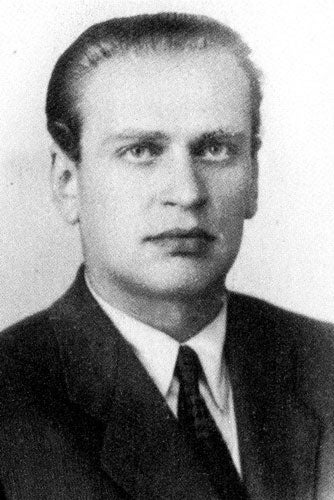Yuri Nosenko: KGB agent whose defection to the United States was one of the Cold War's most dramatic episodes

Was he a genuine high-value defector – or a KGB plant sent by Moscow to discredit an earlier defector and to lay to rest suspicions that the Kremlin had had a hand in the assassination of John F. Kennedy? The tale of Yuri Nosenko, one of the most controversial figures of the Cold War espionage struggle, divided the CIA from the moment he first contacted the agency in Geneva in 1962 until the day he died.
The son of a naval engineer who became minister of shipping under Nikita Khrushchev, Nosenko belonged to the Soviet establishment. He joined the KGB in 1953, where he held a range of jobs – from the security official accompanying Soviet travellers abroad and an officer on the KGB's American desk, to being an operative of the Soviet intelligence service's Seventh Department, whose job was to recruit agents from visiting Western tourists.
In 1959 one of those tourists, a mixed up former US marine, positively threw himself into the arms of the Soviet authorities. His name was Lee Harvey Oswald, and Yuri Nosenko was one of his case officers. When Nosenko finally won asylum in the United States at the beginning of 1964, the Oswald connection turned Nosenko's defection from a routine spy matter into a potential bombshell for East-West relations.
The fact that Oswald had lived for three years in the Soviet Union led many Americans to believe he might have killed JFK at the behest of the Kremlin. If such suspicions had proved correct, the Cold War might have turned hot. Nosenko, however, told the CIA exactly the opposite – that Oswald was not a Soviet agent, that the KGB regarded him as far too unreliable to be one, and that far from being pleased by Kennedy's assassination, the Soviet leadership was panic-stricken at the thought that it might wrongly be held responsible.
But his handlers, led by Tennent "Pete" Bagley, the CIA officer in Bern who had supervised the first contacts with Nosenko in 1962, smelt a rat. One reason was a series of minor discrepancies in the would-be defector's story, among them an implausible claim that, in return for betraying his country all he wanted was SFr800 ($200 at the time), to settle a drinking debt.
The other reason was far more serious – another defector named Anatoly Golitsyn. A major in the KGB, Golitsyn had crossed over three years before. He had brought with him valuable leads that helped unmask some significant Soviet spies in Nato and elsewhere.
But he also brought with him a terrifying, overarching theory. Moscow, he said, was implementing a vast conspiracy to achieve global dominance. Western intelligence agencies were riddled with high-level moles, every defector was a KGB plant, and every overture the Kremlin made had a double purpose.
Decades later, long after he had been discredited, Golitsyn was still at it, arguing that Mikhail Gorbachev's glasnost and perestroika were elaborate fictions to dupe the West. But in the early 1960s, the CIA – and in particular James Jesus Angleton, the agency's head of counter-intelligence – bought his theory hook, line and sinker, regarding Golitsyn as the most important defector ever to come from Moscow.
"This is the one I warned you about," Golitsyn told Angleton when he learned Nosenko's identity in 1964. "This is the man who has come to discredit me." And the legendary and paranoid spymaster, so badly burned by the defection to Moscow a year earlier of his one-time friend and arch-traitor Kim Philby, believed him.
Nothing has borne out Angleton's famous description of Cold War espionage as "a wilderness of mirrors" quite like the Nosenko/Golitsyn affair. Trust Nosenko, and the delusionary Golitsyn could well be a plant. But believeGolitsyn, as Angleton and Bagley did, then Nosenko must be a fake, and his claim that Moscow had nothing to do with the Kennedy assassination must be a lie.
Once in the US, Nosenko found his handlers growing frostier by the week. Debriefings turned into "hostile interrogation" – and then, for over three years, imprisonment, during whichhe was subjected to treatment worthy of the dungeons of the Lubyanka: solitary confinement in a tiny cell, taunts, inedible food and humiliation verging on torture.
But Nosenko never broke. After passing numerous polygraph tests he was released and classified as a bona fide defector. Others who followed him from Moscow bore out his story that the KGB had nothing to do with the killing of Kennedy. The CIA gave Nosenko a new identity, a regular salary and a new life. Despite the treatment he endured, he never lost his faith in the US, nor regretted his decision to defect.
Later he achieved a measure of vindication. Discredited in his turn, Angleton was forced out of the CIA in 1975, having never caught a major mole. Nor has any Soviet defector since Nosenko proved to be a KGB impostor. Now a US citizen, Golitsyn himself is still alive but remains a forgotten throwback to a vanished era.
The Nosenko affair lives on, however, in life and in art. In 1986 Tommy Lee Jones played him in a television film, Yuri Nosenko: Double Agent, while a Nosenko character was shown being tortured by the CIA in Robert De Niro's 2006 movie The Good Shepherd, loosely based on the life of Angleton. And only last year Bagley published his memoirs, Spy Wars, in which, more than four decades on, he continued to argue that Nosenko was probably a plant.
Rupert Cornwell
Yuri Ivanovich Nosenko, intelligence officer: born Nikolayev, Soviet Union 30 October 1927; married (two daughters); died 23 August 2008.
Join our commenting forum
Join thought-provoking conversations, follow other Independent readers and see their replies
Comments